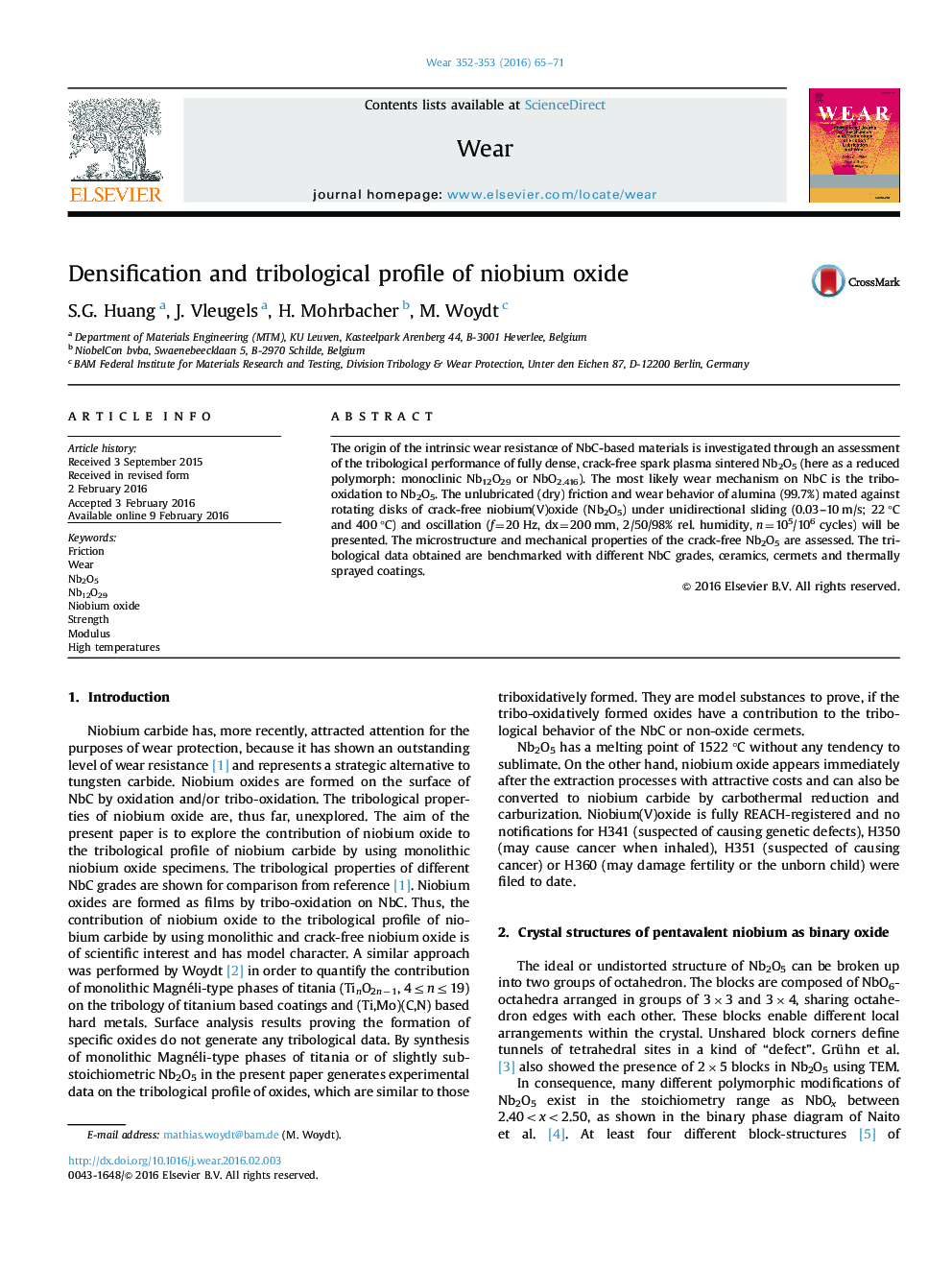| Article ID | Journal | Published Year | Pages | File Type |
|---|---|---|---|---|
| 616910 | Wear | 2016 | 7 Pages |
•Nb2O5 free of micro-cracks (monoclinic Nb12O29 or NbO2.416) can be obtained.•Nb2O5 determines the frictional behavior and contributes to wear protection of NbC.•Nb2O5 determines the load carrying capacity of NbC.•At high sliding speeds, the wear rates of reduced Nb12O29 are close to NbC.•Polymorphs of Nb2O5 are formed by tribo-oxidation on NbC.
The origin of the intrinsic wear resistance of NbC-based materials is investigated through an assessment of the tribological performance of fully dense, crack-free spark plasma sintered Nb2O5 (here as a reduced polymorph: monoclinic Nb12O29 or NbO2.416). The most likely wear mechanism on NbC is the tribo-oxidation to Nb2O5. The unlubricated (dry) friction and wear behavior of alumina (99.7%) mated against rotating disks of crack-free niobium(V)oxide (Nb2O5) under unidirectional sliding (0.03–10 m/s; 22 °C and 400 °C) and oscillation (f=20 Hz, dx=200 mm, 2/50/98% rel. humidity, n=105/106 cycles) will be presented. The microstructure and mechanical properties of the crack-free Nb2O5 are assessed. The tribological data obtained are benchmarked with different NbC grades, ceramics, cermets and thermally sprayed coatings.
